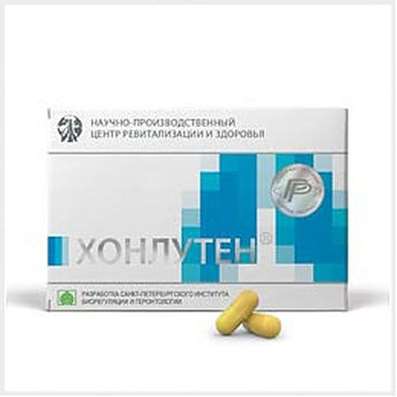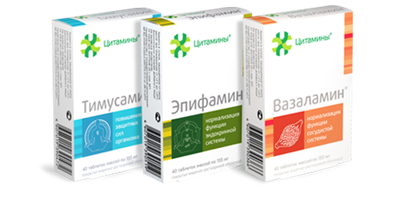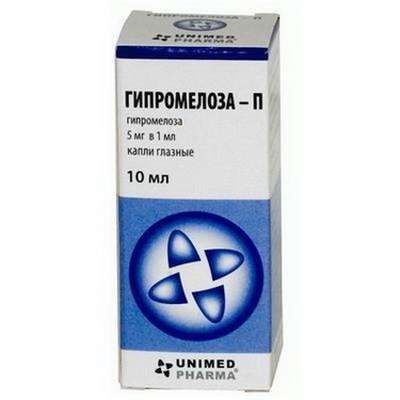Instruction for use: Locoid
I want this, give me price
ATX Code H02AB09 Hydrocortisone
Active substance: Hydrocortisone
Pharmacological group
Glucocorticosteroid for topical use [Glucocorticosteroids]
Nosological classification (ICD-10)
L20 Atopic dermatitis
Itchy atopic eczema, Common neurodermatitis, Allergic skin diseases, Allergic skin diseases of non-infectious etiology, Allergic skin diseases of non-microbial etiology, Allergic skin diseases, Allergic skin lesions, Allergic manifestations on the skin, Allergic dermatitis, Allergic diathesis, Allergic itching dermatosis, Allergic Skin Disease, Allergic skin irritation, Dermatitis allergic, Atopic dermatitis, Dermatosis allergic, Diathesis exudative, Skin Allergic Disease, Skin allergic reaction to medicinal and chemical preparations, Skin reaction to medication, Skin and allergic disease, Acute eczema, Chronic atopic dermatitis, Exudative diathesis, Itching allergic dermatosis
L21 Seborrheic dermatitis
Dermatitis seborrheic, Increased sebum separation, Seborrheic Eczema, Seborrheic dermatitis of the scalp, Seborrheic pyodermatitis, Seborrhea, Eczema seborrheic
L24 Simple irritant contact dermatitis
Simple contact dermatitis
L25 Contact dermatitis, unspecified
Intertriginous dermatitis, Contact Eczema, Contact dermatitis, Contact dermatitis of non-microbial etiology, Contact dermatitis, Skin wetting surface, Fractures, Intertrigo,Skin Difficulty, Subacute and chronic contact dermatitis, Phlebotoderma, Simple contact dermatitis complicated by impetigo
L30.9 Dermatitis, unspecified
Allergic dermatoses complicated by a secondary bacterial infection, Anal eczema, Bacterial maturation, Varicose Eczema, Venous dermatitis, Inflammation of the skin, Inflammation of the skin upon contact with plants, Inflammatory Skin Diseases, Inflammatory skin reactions, Inflammatory processes of the skin, Hypostatic dermatitis, Fungal Eczema, Fungal dermatosis, Dermatitis, Dermatitis is stagnant, Dermatitis and eczema in the anal area, Dermatitis acute contact, Perianal dermatitis, Dermatosis, Dermatosis of the scalp, Dermatosis of psoriasis, Dermatosis with persistent itching, Dermatoses, Dermatoses itchy, Other itching dermatoses, Significant eczematous manifestations, Itching with, dermatoses, Itching eczema, True eczema, Skin reaction to insect bites,Skin itching with dermatosis, Constitutional eczema, Weeping eczema, Drowsing inflammatory skin disease, Dying Infectious-Inflammatory Skin Disease, Non-allergic dermatitis, Nummular eczema, Acute contact eczema, Acute inflammatory skin disease, Acute dermatosis, Acute severe dermatosis, Perianal dermatitis, Superficial dermatosis, Subacute Contact Eczema, Simple dermatitis, Occupational dermatitis, Psychogenic dermatosis, Bubble dermatitis of newborns, Pustular eruptions, Irritation and redness of the skin, Low-flammable eczema, Dry atrophic eczema, Dry eczema, Toxic dermatitis, Ear eczema like dermatitis, Chronic eczema, Chronic dermatosis, Chronic common dermatosis, Scaly papular dermatosis, Eczema, Eczema anal region, Eczema of the hands, Eczema Contact, Eczema lichenized, Eczema Nummular, Eczema acute, Eczema acute contact, Eczema subacute, Eczematous dermatitis, Eczema-like rashes, Ecome exogenous, Endogenous eczema, Gluteal dermatitis, Restricted itchy dermatitis
L40 Psoriasis
Chronic psoriasis with diffuse plaques, Generalized psoriasis, Psoriasis of the scalp, Psoriasis of the scalp, Generalized form of psoriasis, Psoriasis dermatitis, Psoriasis complicated by erythroderma, Invalidative psoriasis, Isolated psoriatic plaque, Exfoliative psoriasis, Psoriatic Erythroderma, Psoriasis with eczematosis, Hyperkeratosis in psoriasis,Inverse psoriasis,Psoriasis eczematous, Dermatosis of psoriasis, Psoriasis of the genitals, Psoriasis with lesions of hairy areas of skin, Erythrodermal psoriasis, Chronic psoriasis of the scalp, Chronic psoriasis, Ordinary psoriasis, Refractory psoriasis, Kebner phenomenon, Scaly lichen
Composition and form of release
Ointment for external use 0,1% 1 g
active substance:
Hydrocortisone 17-butyrate 1 mg
Auxiliary substances: polyethylene ointment base (oil vaseline 95%, PE 5%)
In aluminum tubes with an aluminum membrane and a screw cap made of PE high density of 30 g; In a pack of cardboard 1 tuba.
Description of dosage form
Translucent, from light gray to almost white, homogeneous soft, oily ointment.
Characteristic
Synthetic nonhalogenated GCS for topical application.
pharmachologic effect
Pharmacological action - decongestant, antipruritic, anti-inflammatory local.
Pharmacodynamics
LocoidŽ is a synthetic, non-halogenated GCS for external use. The esterification of the hydrocortisone molecule with a residue of butyric acid (butyrate) made it possible to radically increase the activity of the preparation as compared to native hydrocortisone. LocoidŽ has a rapidly advancing anti-inflammatory, anti-edematous, antipruritic effect.
The use of LocoidŽ in recommended doses does not cause suppression of the hypothalamic-pituitary-adrenal system. Although the use of large doses of the drug for a long time, especially with the use of occlusive dressings, can lead to an increase in the content of cortisol in the blood plasma, it is usually not accompanied by a decrease in the reactivity of the pituitary-adrenal system, and the withdrawal of the drug leads to rapid normalization of cortisol production.
Pharmacokinetics
Suction
After application, the active substance accumulates in the epidermis, mainly in the granular layer, systemic absorption is negligible. A small amount of hydrocortisone 17-butyrate is absorbed into the systemic blood stream unchanged.
Metabolism
Most hydrocortisone 17-butyrate is metabolized to hydrocortisone and other metabolites directly in the epidermis and subsequently in the liver.
Excretion
Metabolites and a small part of unchanged hydrocortisone 17-butyrate is excreted by the kidneys and through the intestine.
Indications
Surface uninfected, sensitive to local SCS, skin diseases:
Dermatitis, incl. Atopic, contact, seborrheic;
eczema;
psoriasis.
Contraindications
Hypersensitivity to hydrocortisone or auxiliary components of the drug;
Bacterial skin infections (strepto- and staphyloderma, gram-negative folliculitis, etc.);
Viral skin infections (herpes simplex, chicken pox, shingles, etc.);
Fungal skin infections;
Tuberculosis and syphilitic skin lesions;
Parasitic skin infections;
Neoplastic skin changes (benign and malignant tumors);
Acne, rosacea, perioral dermatitis;
Postvaccination period;
Violation of the integrity of the skin (wounds, ulcers).
With caution: pregnancy, lactation.
pregnancy and lactation
GCS penetrate the placenta. Effects on the fetus can be particularly pronounced when applying the drug on large surfaces. There is no data on the amount of hydrocortisone excreted in breast milk; It is recommended to observe special caution when prescribing the drug during lactation.
Side effects
Local reactions: skin irritation, in rare cases - other local reactions, characteristic of local steroid therapy.
Systemic reactions: with prolonged use, application to large surfaces and / or the use of occlusive dressings, side effects characteristic of systemic GCS can be observed. The risk of local and systemic side effects with LocoidŽ is lower than with fluorinated steroids.
Interaction
Data on drug interactions Locoid there.
Dosing and Administration
Outwardly. LocoidŽ in the form of an ointment is used in subacute and chronic processes, especially in the presence of lichenification, infiltration, dryness.
The drug is applied to the affected areas of the skin with a thin layer 1-3 times a day. When there is a positive dynamics, the frequency of application of the drug can be reduced to 2-3 times a week. To improve penetration, the drug is applied by massaging movements. In cases of refractory disease, for example, in the localization of dense psoriatic plaques on the elbow areas, lap, the drug can be used for occlusive dressings. The dose of the drug used during the week should not exceed 30-60 g.
Overdose
There are no data on LocoidŽ overdose.
Symptoms: prolonged use of the drug in high doses may increase the above-described side effects. When symptoms of hypercortisy appear, the drug should be discontinued.
special instructions
Do not apply LocoidŽ to the periorbital area due to the risk of developing glaucoma. With a systematic hit on the conjunctiva, there is a risk of increased intraocular pressure.
Any SCS (glucocorticosteroids) for external use in the form of an ointment is undesirable to apply on the scalp, as well as with acute inflammation (especially exudative). For the treatment of steroid-sensitive skin lesions localized in the face, folds, genitalia, as well as on areas of the skin with abundant hair, LocoidŽ, cream and Locoid KreloŽ are preferable.
The drug is undesirable to use in the presence of atrophic skin changes.
The risk of local and systemic side effects increases when applied to extensive areas of damage, prolonged use, the use of occlusive dressings and in childhood.
If there is no effect within 2 weeks of continuous treatment, the diagnosis should be clarified.
As with any GCS, it is desirable to limit the duration of application and the course dose is minimal enough to stop the skin process.
Pediatric Use
Possible use in children from 6 months of age. In cases of use of the drug in children, in the face area or under occlusive dressings, the duration of the course of treatment should be reduced.
When used in children, the skin surface area on which the drug is applied should not exceed 20% of the total.
In childhood, suppression of the function of the adrenal cortex can develop more quickly. In addition, there may be a decrease in the excretion of growth hormone. When using the drug for a long time, it is necessary to observe the body weight, height, plasma cortisol level. In a study in children who received 30-60 g of Locoida per week for 4 weeks, compared to 1% hydrocortisone ointment, no child had adrenocortical dysfunction; Differences in hydrocortisone 17-butyrate in this indicator from conventional hydrocortisone was not observed.
Influence on ability to drive vehicles and work with mechanisms
Data on the effect of LocoidŽ on the ability to drive vehicles and work with mechanisms are not.
Storage conditions
At a temperature not exceeding 25 ° C.
Keep out of the reach of children.
Shelf Life
5 years.
Do not use after the expiry date printed on the package.

 Cart
Cart





